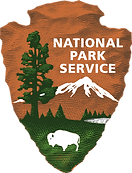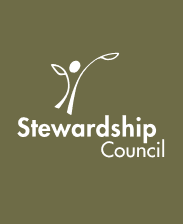
Fall River Resource Conservation District

The Shasta Resource Advisory Committee (RAC) met in early 2008. The RAC is tasked with allocation of the renewed Title II program funds over the next 4 years. In past years, grant proposals were reviewed and funded by the RAC to implement a variety of projects that met program objectives. However, many individuals on the committee felt a scale of efficiency was lost when funding several smaller projects, although many of these small projects had merit. A discussion followed that advocated and supported the idea of funding a "larger" project that met the objectives of the statute to create jobs, develop economic stability for rural communities and stability for payment of counties, as well as having the components of many of the small projects previously funded by the RAC. This discussion eventually led to the idea of using RAC funds to form a type of community stewardship project that would serve as a "model" of how the local stakeholders could provide input regarding locally managed federal lands. RAC representatives approached the Fall River Resource Conservation District (FRRCD) in mid-March 2009 to introduce the concept and encourage a larger project submittal. The Fall River RCD submitted a proposal to the RAC in May 2009 and this proposal officially resulted in the formation of the Burney-Hat Creek Community Forest and
Watershed Group.
Purpose:
The purpose of this project is to improve social, environmental, and economic conditions in the Burney Creek and Hat Creek watersheds. These two watersheds include all of the land that drains into Burney Creek and Hat Creek, totaling 364,250 acres. Fifty-eight percent of this land is in the Lassen National Forest. Another 29 percent is owned by large private forestland owners and 4 percent by large ranches. The communities of Burney, Johnson Park, Hat Creek, Cassel, and Old Station lie within these two watersheds. Local communities suffer from high unemployment and face high risk of wildfire in many surrounding forests. There is a recognized need for a coordinated public-private effort to address these and other concerns.
Goal:
The goal of this project is to develop a plan to integrate sustainable natural resource management with socioeconomic development across the 364,000 acre, two-watershed project area.
About:
Communities in the Burney and Hat Creek Watersheds have economies and employment tied to the land. Industries utilize the forest for wood products, including fuel for electricity producing plants, agriculture and ranching. Additionally, various sectors provide services to those who come to hunt, fish, enjoy the scenery, or recreate in the region. The area is also home to retirees and second homeowners who have recently moved to the area to take advantage of the beauty of the land and the peaceful rural lifestyle the area offers. These residents also generate jobs associated with building new homes and refurbishing old ones.
Over 35 individuals who live and or work in the Burney Creek and Hat Creek Watershed areas were interviewed for this project. Each was asked to identify the most pressing social, economic, and environmental needs. The interviewees included Pit River tribal members, federal and state agency employees, large landowners, environmental group representatives, contractors, wood products business managers, fishing guides, and other local business owners and stakeholders. There was broad agreement amount interviewees that this project should address fire risk, forest health and unemployment. Several people were also interested in restoring riparian areas and fisheries, developing recreation and tourism opportunities and improving wild life management.
Collaboration Yields Results
Projects
Burney Gardens
The Burney Gardens Project treated a degraded meadow system. Four different private landowners own and manage the meadow, covering roughly 1200 acres.

Burney Gardens

Burney Gardens

Burney Gardens

Burney Gardens
Lower Hat Creek Restoration
The Lower Hat Creek project included assessment, planning, and design to restore streambanks and aquatic habitat along the Hat Creek, upstream of the bridge over Hwy 299. Eroding stream banks and a large sediment slug was degrading habitat in this area and threatening cultural resources.

Lower Hat Creek Restoration

Lower Hat Creek Restoration

Lower Hat Creek Restoration

Lower Hat Creek Restoration
Partners...
-
Are committed with vested interest
-
Build trust by jointly planning projects
-
Come to a agreement & support each others projects
-
Accept our diverse interests & participate regularly
-
Pool resources to expedite projects
-
Explore innovative funding mechanisms
-
Share project planning and review tasks



Current Conditions
Forest & Community

Forests are unhealthy from:
Fire
Suppression
Drought
Insects
disease
reduced
management
Decades of fire suppression coupled with a shift to a drier climate has our forest highly susceptible to catastrophic fire and insect/disease spread. Increasing active management of our forests is nessisary to protect and preserve forests into the future.
lack of funding, projects, and incentives
Federal, state, and private land managers struggle to fund and implement projects in a timely manner due to low budgets, low staffing levels, and high turnover rate.


Fuels in abundance
Fire suppression, drought, insects, and disease have many of our forests in critical condition. Dense forests with fallen and diseased trees create hazardous fuel loads on the forest floor. Wildfire is more likely to threaten communities and
damage forest structure.
Desired Conditions
Healthy forests
Healthy Meadows
Clean Water
Healthy forests and meadows clean and preserve our water, provide crucial habitat and act like reservoirs, slowly releasing water throughout the year. Maintaining meadows may require active management through prescribed fire, aspen enhancement, stream restoration, and
conifer management.


collaboration
Working together we can produce high quality projects that benefit our forests and communities. Diverse experts and stakeholders should be at the table to discuss each project and
find ways to collaborate.
Resilient
forests
& Communities
Forests and communities can recover quickly from wildfire, and drought conditions. Prescribed fire and forest management help protect communities and forests from catastrophic wildfire.

Contacts
Todd Sloat
Fall River Resource Conservation District
Watershed Coordinator
530-708-1597
Jonathan Kusel
Sierra Institute for Community & Environment
Project Manager
530-284-1022
Garrett Costello
Fall River Resource Conservation District
Watershed Recreation Coordinator
801-599-9992
"The Burney Hat Creek Community
Forest and Watershed Group,
working together to promote a healthy landscape for all."
For more information visit:













